What is asbestos?
Asbestos is a naturally occurring fibre that was typically used in construction last century. There are officially six different types (Chrysotile, Crocidolite, Amosite, Tremolite, Actinolite and Anthophyllite) of asbestos, however the three most common types of asbestos are White Asbestos (Chrysotile), Blue Asbestos (Crocidolite) and Brown Asbestos (Amosite) and each type is made up of millions of thin fibrous crystals. Asbestos is also split into two main classes:
- Serpentine – curly fibres and easily absorbs water (hydrophilic)
- Amphiboles – needle-like fibres and repels water (hydrophobic)
Why was asbestos used?
It is a really, really versatile material. It adds strength and flexibility and can provide heat, sound and electrical resistance.
This means asbestos can be found in a huge variety of products and materials. These materials have become known as ACMs, or Asbestos Containing Materials.
Where is asbestos used around the world?
Asbestos can be found all over the world. It is still mined and used in many large and developing countries, often without the full knowledge of the dangers. Even in the US asbestos hasn’t been completely banned! Other countries that still permit asbestos to be imported, exported and used include Russia, Kazakstan, China, India and Brazil.
Where is asbestos banned?
UK, The European Union, Australia, Hong Kong, Japan, New Zealand, South Africa, and Canada.
What materials can contain asbestos?
Lagging
Lagging is a type of material used to fill gaps between walls, under floors, above ceilings or in lofts. It is used to provide heat-proofing and sound-proofing and insulation.
Sprayed and textured coatings
Asbestos could be added to mixtures and sprayed onto surfaces, walls and ceilings. Community buildings or public areas, such as halls, schools, car parks and cinemas, often featured this type of asbestos – sometimes just to provide decoration! Spray coatings would give insulation (sound and heat) to ceilings, especially in high-rise buildings, as well as fire-proofing. This material is still considered to be one of the worse for fibre release.
Insulation
Boilers, pipes and anything that could generate heat were often insulated with Asbestos containing materials.
Cement and tiles
This is one of the most common types of ACM and can be found in roofing, flooring and insulation. Any industrial, commercial, domestic or public building could feature these tiles and cements.
Plastics
Its versatility meant that it was a perfect material to use both during the manufacturing process and as part of a finished product. In manufacturing asbestos would be ground up and combined with an existing plastic. This plastic could then be used to make finished products like:
Parts for cars and planes, gaskets, brake linings, Electric and electro-mechanical parts (e.g., switches, circuit breakers), and appliances, toilet cisterns, water tanks, Vinyl and PVC.
What is an asbestos survey and do I need one?
An asbestos survey is an effective way to help you manage asbestos in your premises by providing accurate information about the location, amount and type of any asbestos-containing materials (ACMs).
An asbestos survey should only be carried out by competent surveyors who can clearly demonstrate they have the necessary skills, experience and qualifications. The survey will usually involve sampling and analysis to determine the presence of asbestos. Following a survey, the surveyor should produce a survey report which details and identifies the following findings:
- the location of any asbestos-containing materials in the building
- the type of asbestos they contain
- condition these materials are in
If undertaking maintenance, refurbishment or demolition works, the asbestos survey can help to provide enough information so that an asbestos register, a risk assessment and a management plan can then be prepared for members of public or trades.
Non-Domestic Premises – If you are responsible for maintenance and are the duty holder for the asbestos, you must either arrange a survey or presume the worst case of widespread asbestos in the premises and would then need to take all appropriate full stringent precautions for any work that takes place.
What are the categories of asbestos works?
There are three categories of asbestos works:
- Notifiable Licenced Work
- Notifiable Non-Licenced Work (NNLW)
- Non-Licenced Work (NL)
Notifiable licenced work can only be carried out by somebody who holds a licence issued by HSE because of the hazardous nature of these higher risk materials. These materials include sprayed asbestos coatings, asbestos insulation or asbestos lagging and most work with asbestos insulating board (AIB). Furthermore, the HSE must be notified 14 days prior to the work beginning, by completing and submitting an ASB5 e-form (this must be completed by the licence holder).
Notifiable Non-Licenced Work (NNLW) can be carried out by non-licenced contractors, however must still be notified to the HSE by completion of ASB NNLW1 e-form. These works will still need to be undertaken with the appropriate controls in place and employers will have additional requirements such as medical surveillance and record keeping. NNLW relates to lower risk asbestos-containing materials (ACM’s) concerning maintenance or removal of textured decorative coatings, insulating board (maintenance), asbestos insulation (maintenance), damaged or to be broken cement products, asbestos paper and cardboard products if not firmly bonded in a matrix.
Non-Licenced Work (NL) relates to lower risk ACM’s involved with short non-continuous maintenance tasks, removal of sealed/good condition ACM’s, air monitoring or associated with collecting and analysing samples to identify the presence of asbestos. The correct precautions will still need to be ensured and for some types of NL additional requirements for employers may apply. The type of ACM’s can cover minor textured decorative coatings, insulating board (maintenance or entirety removal), cement products, textiles, gaskets, floor tiles, bitumen roof felt, shingles, damp-proofing coatings, mastics and other firmly bonded matrix items e.g. paints, bitumen, resins and rubber.
All work with asbestos needs to be carried out with the appropriate controls in place and those carrying out the work must have had the correct level of information, instruction and training, to protect themselves (and others in the area) from the risks to health that exposure to asbestos causes.
